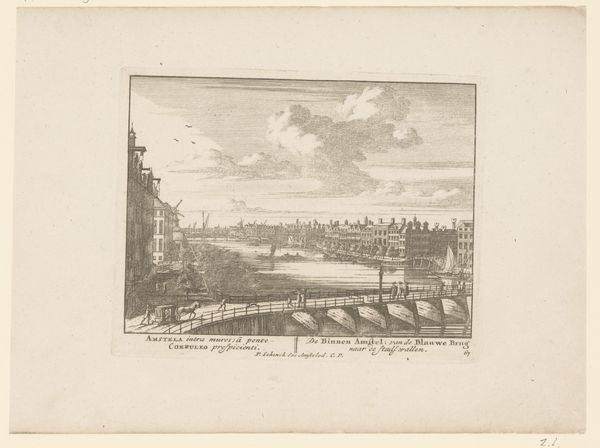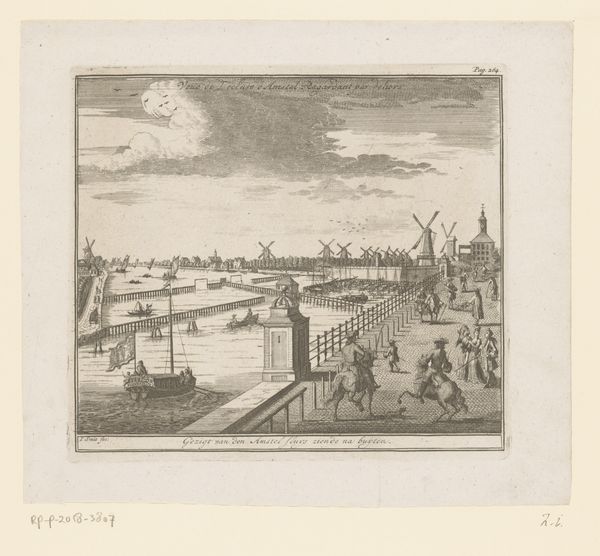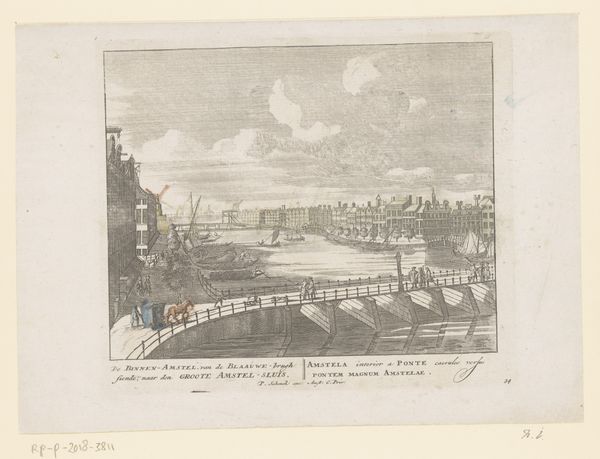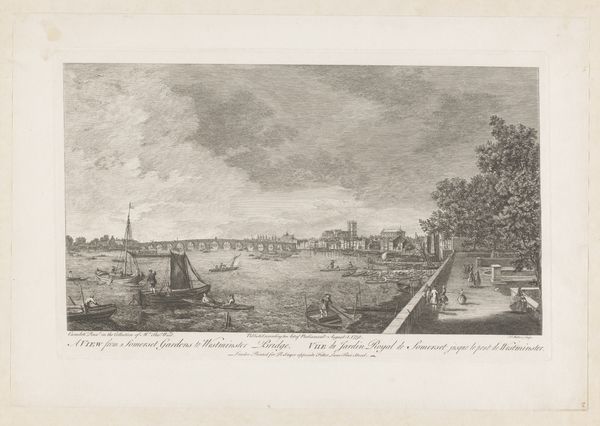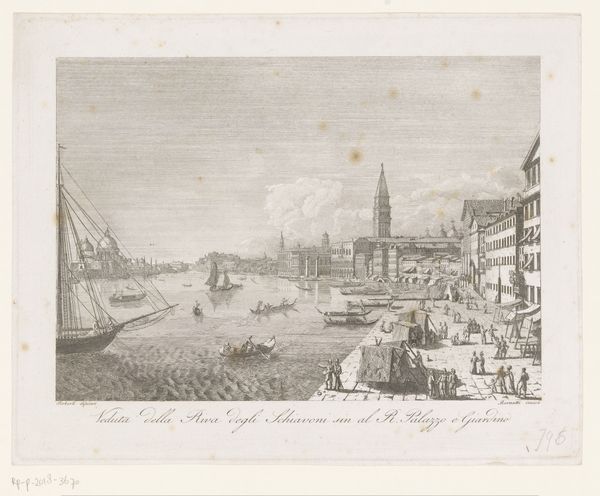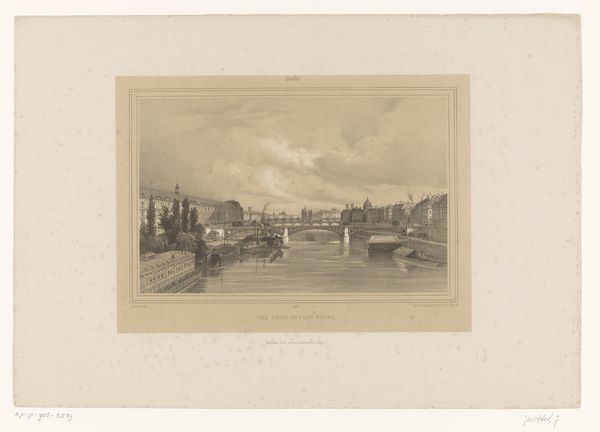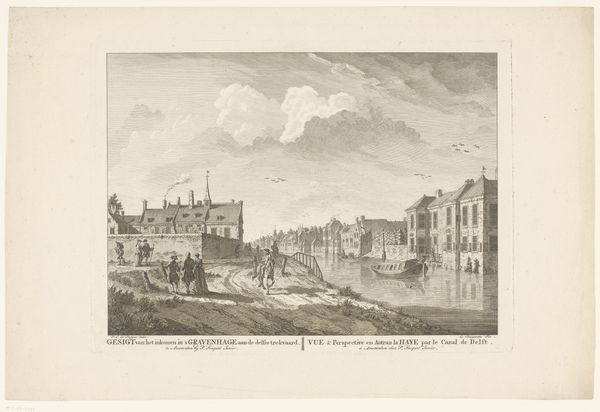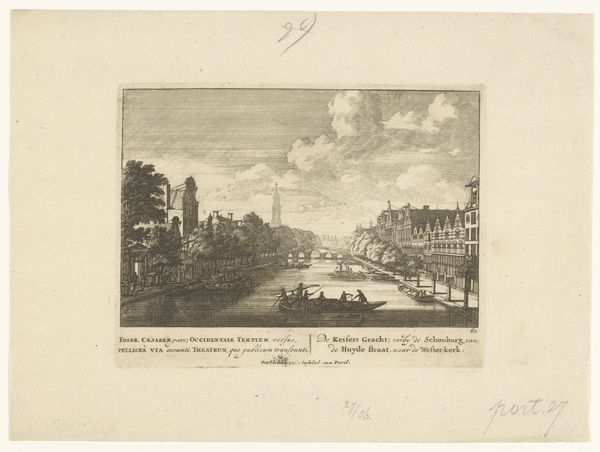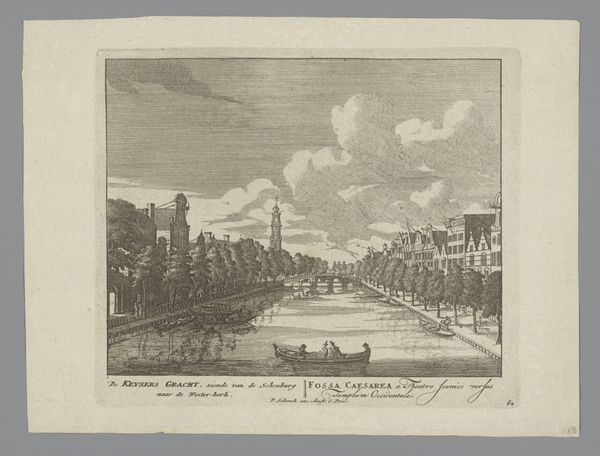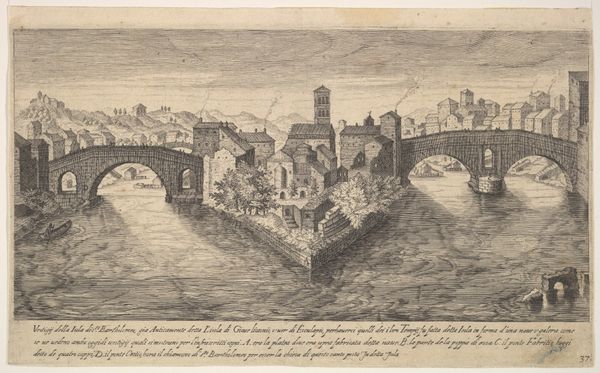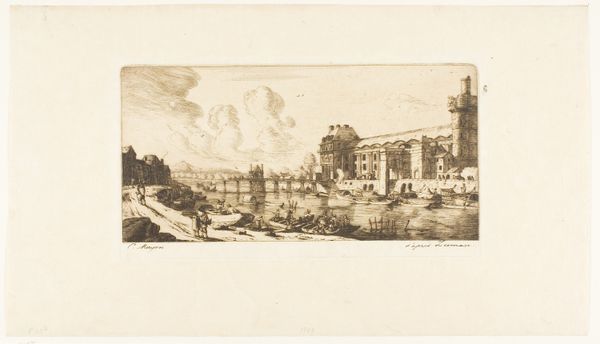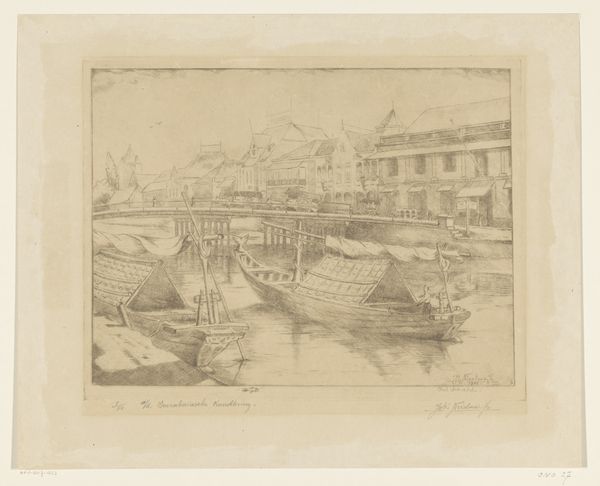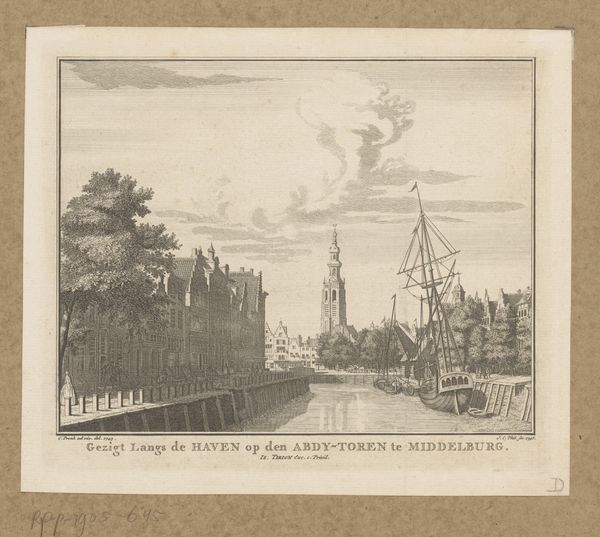
print, engraving
#
dutch-golden-age
# print
#
landscape
#
cityscape
#
engraving
Dimensions: height 176 mm, width 194 mm
Copyright: Rijks Museum: Open Domain
Curator: Look at this subtle print: "Gezicht op de Binnen-Amstel vanaf de Blauwbrug," an engraving dating from 1811-1824, currently held at the Rijksmuseum. The artist remains anonymous. Editor: It has such a restrained and muted atmosphere; I immediately note the delicate lines. A network of details unfolds gradually. How striking, that the architecture reflects on the water. Curator: Consider how printmaking, especially engraving, functioned as a primary medium for disseminating visual information. Cityscapes like these helped shape a collective urban imaginary. This image speaks volumes about labour; from the artisan meticulously crafting each line to the tradesmen and gentry crossing the bridge. Editor: Indeed! The linear perspective guides our eyes to the horizon, the vanishing point perfectly placed, with the buildings that line the canal mirroring a rhythmic arrangement of geometric forms. Semiotics come into play when one thinks that bridges are pathways which also present visual barriers, creating an artificial space, mediated for control. Curator: The repetitive use of line speaks to mechanization and labor. Each stroke of the engraver's tool represents time and physical effort, the production and distribution of this scene facilitated access to otherwise secluded urban life. Who had access to the technology, who were its intended consumers, and who is ultimately represented in it? Editor: Let's not ignore the intrinsic nature of engraving as well; the fine, crisp lines delineate forms and give texture to the scene. From a formal perspective, it showcases an almost photographic precision of Dutch architectural construction along the Amstel river. The monochromatic presentation focuses attention on tonal and structural organization. Curator: Examining it this way reveals class structure encoded within landscape representation. What could be perceived as idyllic reveals more, in a context of commodity production, about social structures and material relations. Editor: Considering our approaches, my analysis helps us understand how art organizes its forms. The materialist perspective reminds us about art production and social context. Each contributes towards enriching our perception of art. Curator: Precisely; combining helps one understand the past's ongoing influence of visual art's relationship to our modern experience.
Comments
No comments
Be the first to comment and join the conversation on the ultimate creative platform.
